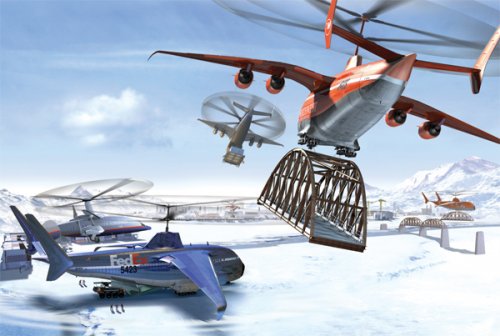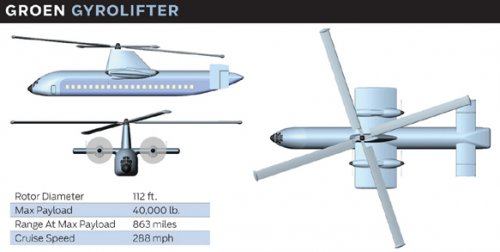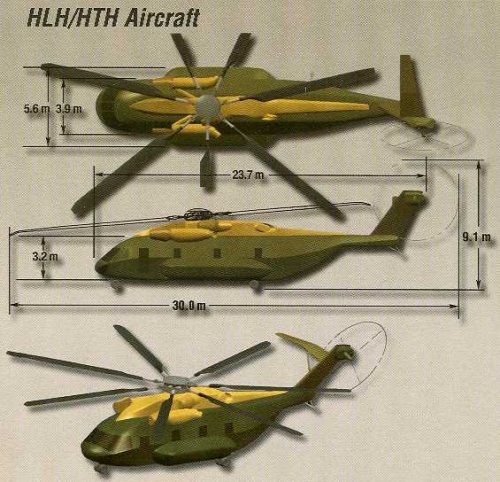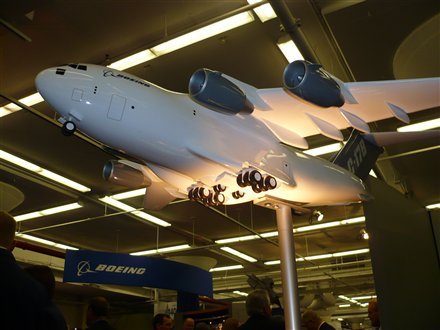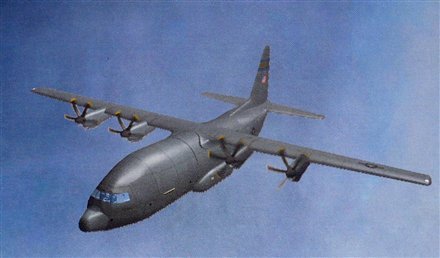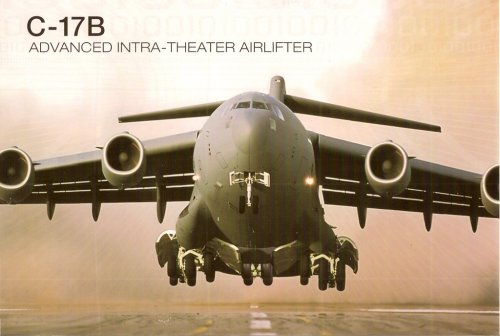From Inside the Army: Also there is a very "Read inside the lines" article in latest Rotor and Wing magazine worthy of reading on the topic.
Common fuselage design ‘might have merit’
JROC TO REVIEW JOINT FUTURE THEATER LIFT CAPABILITIES IN EARLY 200
Date: August 15, 2008
Army and Air Force planners are preparing a capabilities document explaining their respective needs for a massive heavy lift platform, and they expect to have the paper ready for delivery to a senior Pentagon review board by the beginning of next year, according to an Army aviation official.
The notional aircraft would replace the Army’s Joint Heavy Lift and the Air Force’s Advanced Joint Air Combat System programs, after the Army and Air Force chiefs of staff agreed in January to merge requirements for their respective JHL and AJACS -- and renamed the effort Joint Future Theater Lift (JFTL).
“JHL and AJACS are both alive, basically, in that [initial capabilities] document for Joint Future Theater Lift,” Col. Randy Rotte, deputy director of the Army aviation directorate, told sister publication Inside the Army during a July 30 interview.
“The Army and the Air Force together are now working through what should be in that ICD, and you might expect there will be disagreements there -- we’ll work through whatever those disagreements are and we’ll come to a consensus on what we send forward,” he said.
Rotte expects the document will be ready to send to the Joint Requirements Oversight Council in January or February.
After JROC reviews the Army and Air Force’s ideas for JFTL’s capabilities, an analysis of alternatives to determine which aircraft type would best suit both services will follow. “That’s going to be the robust analysis based off of a full analytical agenda that looks at these differences,” he said.
Options for the Army’s preferred vertical-takeoff-and-landing aircraft (VTOL) and the Air Force’s preferred super short-takeoff-and-landing aircraft (SSTOL) will be examined as possible solutions during that process, said Rotte.
The Air Force envisioned a SSTOL aircraft for its Advanced Joint Air Combat System, while the Army had hoped for a VTOL tiltrotor aircraft for its Joint Heavy Lifter.
“The beauty of vertical is, you can get almost anywhere; the downside is, that’s a technologically challenging venture to carry something that heavy vertically, hence a big cost associated with that,” said Rotte.
“On the other hand, short-takeoff-and-landing is great in the sense of being able to get there technologically and cost-wise, but now you’ve restricted yourself to certain areas of the world,” he added.
Boeing recently announced a development effort for a “joint common airlift system” that could meet both Army and Air Force requirements by employing a common fuselage that could support a traditional fixed-wing jet or tiltrotor, Inside the Air Force reported last month.
The company is making a “technology investment” in the program so it can determine if building such an aircraft is possible, Boeing officials have said.
A common fuselage “is an out-of-the-box approach that might have merit,” Rotte told ITA.
However, “it depends -- in the analysis of alternatives -- what are the important aspects,” he said. “If cost is that big of a driver and you can get such commonality between the two . . . I’m assuming the AOA will at least consider that” common fuselage design, added Rotte. “Because you can’t afford to have two separate programs, you can’t afford AJACS and JHL.”
Rotte said he was not aware what funding was planned for JFTL in the emerging fiscal year 2010 to 2015 program objective memorandum -- the service’s six-year spending plan -- as it is still being finalized.
The JFTL program “will be more of a player” in the next POM, which will be developed in two years and cover FY-12 through FY-17, he said. At that time, “it will be well informed by JROC, [the] AOA -- and all those line up to inform that cycle,” said Rotte.
Still, officials are hoping to fund some development efforts early, he added.
Specifically, the Army is considering smaller risk-reduction efforts to examine relevant technologies. “Is it composites that will help us, is it tiltrotor-type endeavors?” Rotte said officials will ask.
Flight demonstrators, being a “significant investment,” probably would not be considered until after the analysis of alternatives better clarifies the program’s future, he said.
Costs for the system design and development phase -- which for JHL were thought to be around $2.5 billion -- also will depend upon the decisions reached after the AOA is completed, noted Rotte. “If vertical prevails, than [costs] will probably be along those lines,” he added. -- Daniel Wasserbly

